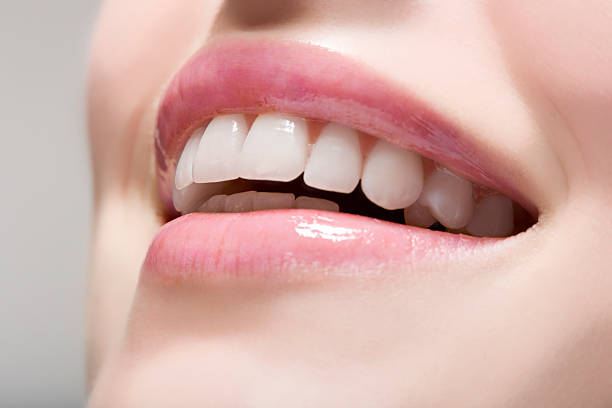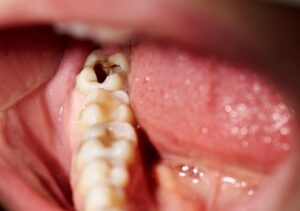The dense pink tissue in your mouth along the teeth-base, called the gums or gingivae, covers teeth-root and protects them. There is one gum for each set of teeth, which remains tightly attached to the jawbone. When tissues surrounding the teeth pull back, making teeth look longer than normal, it is called receding gums disease. The resulting gaps or pockets between the gum line and teeth become breeding grounds for harmful bacteria. If not treated in time, receding gums could damage bones and tissue surrounding teeth permanently.
Receding gum disease is very common, but fortunately, it could be treated effectively by your dentists. Most importantly, you can prevent gums recession by following standard oral hygiene practices. So, why make your gum weak when you can keep it healthy and strong by following a healthy oral care regimen. Continue reading to know how gum recedes, suitable treatments, and how to prevent.
Symptoms of Receding Gums
Gums start receding gradually, so most people fail to link evolving symptoms to the disease as these symptoms are very common. It begins with sensitivity and leads to making your tooth look longer. You will experience a notch near the gum line. Food particles get stuck in between the gums and teeth, and bacteria start building up. It ultimately leads to tooth decay, but before that, you will see these symptoms:
- Weakening gum tissues start bleeding even with a soft bristle brush.
- Flossing teeth will become a painful exercise
- Receding gum exposes tissues, so you will see it turning red
- The infection could lead to swelling
- Bacteria growth will make your breath bad
- Mild pain at the gum line
- Exposure of teeth roots and gums shrinking
- Tooth decay, if not treated in time
Diagnosis of Gums Recession
If you are experiencing symptoms of receding gums disease, you should consult your dentist immediately, as delaying could worsen the condition. Following physical examination, he will confirm whether the gum is receding or not.
If required, your dentist will measure gum pockets to diagnose the disease. A healthy dental system will have pocket sizes in a range of 1 to 3 mm. You will need special treatments to control the gum recession if the pocket size is longer than average. Depending on the severity of the case, your dentist might refer you to a periodontist, a specialist trained to treat gum diseases.
Why Do Gums Recede?
Blame it on your food habit, oral hygiene, aging, or lifestyle; it is natural for gums to start weakening. Before your periodontist starts the treatment for receding gums, you should be aware of the factors that trigger gums recession. Some of the common reasons behind gum recession could be:
Periodontal Diseases: Infection caused by bacteria is one of the most common reasons for gums recession. Bacteria start destroying gum tissues and supporting bone.
Genetics: Sometimes, despite the best oral hygiene practices, gum starts receding. And this could be due to genetic factors. If you have a family history of gum disease, you should be a little more careful with your gum care, as over 30% of receding gum cases are due to genetic factors.
Brushing Habit: Teeth enamel is strong to endure friction, but brushing too aggressively in the wrong way not only wears down enamel but triggers gum recession. So, don’t be harsh on your teeth while brushing.
Oral Care: If you are not brushing and flossing at least once a day, you are more prone to gums recession, as an unhygienic mouth allows bacteria to build up faster. Plaques turn into calculus (tartar), which triggers gum recession.
Hormonal Changes: Unfortunately, the change in hormone functions, particularly among women during puberty, pregnancy, and menopause, make gums more sensitive. Weak gums are more susceptible to gum recession.
Teeth Grinding: Although not directly responsible for gum recession, aggressive grinding or clenching of teeth makes it weak. It could lead to gum recession over time.
Dental Structure: If your teeth are crooked, overcrowded, or misaligned, then your bite won’t be perfect, thus creating excessive pressure on one or the other side of the dental system. Uneven forces weaken gum, thus causing gums recession.
Tobacco Use: If you chew or smoke tobacco products, plaques and tartars will form on your teeth. If not cleaned regularly by professionals, it will lead to gum recession, and ultimately tooth decay.
Gum Recession Treatments
If your gum recession is mild, then your dentist will start the treatment with a deep-cleaning procedure, also called tooth scaling or root planing. Plaques, tartars, and other deposits are removed carefully from the gum line. If required, your dentist will smooth the exposed tooth to prevent further accumulation of bacteria in the area.
Following the deep cleaning procedure, your dentist might prescribe some antibiotics to kill the remaining harmful bacteria. However, if the gum recession is severe with signs of excessive bone loss and deep pockets, your dentist may refer you to a periodontist for gum surgery.
Medications
A professional tooth cleaning is the first step in treating gum recession. Bacteria grow naturally in a conducive humid environment of the mouth, so the next step of the treatment involves prescribing antibiotics to control bacterial growth in the mouth. Besides, antibiotics your periodontist may prescribe medication to control gum recession causing factors, which could be:
- Antimicrobial mouthwash
- Topical antibiotic gel
- Enzyme suppressants
What Type of Surgery Is Used to Treat Gum Recession?
It is a fact that most gum recession cases can be treated by following certain preventive measures and oral hygiene practices. However, if the case is severe with deep pockets and signs of tooth decay, you might need surgical intervention to repair receding gums. Your orthodontist will examine your case and recommend one of these surgical procedures to treat gum recession:
Open Flap Surgery and Root Planing
If medication and other remedial treatments fail to protect receding gums, then your periodontist will conduct open flap surgery. It is a kind of deep tissue cleaning procedure in which the doctor lifts the affected gum tissue and removes harmful bacteria and other deposits. Once done, the doctor will secure the gum tissue on the tooth, thus reduce the gaps or pockets. Your teeth might appear a little longer after flap surgery as the gums fit closer to them.
Bone Regeneration
If receding gums has affected the supporting bone your periodontist might recommend a bone and tissue regeneration procedure. The procedure involves lifting affected gum tissues to remove debris and bacteria and then applying a regenerative material to boost natural bone and tissue regeneration. Periodontists use a membrane, tissue-stimulating protein, or graft tissue to encourage regeneration. After the application of the regenerative material, your periodontist will secure the gum over the root of the teeth.
Soft Tissue Graft
A connective tissue graft is one of the most commonly used tissue graft procedures used for treating receding gum. Your periodontist will cut a flap of skin from the roof of the mouth and then the subepithelial connective tissue from the flap is removed. The next step involves stitching the connective tissue to the affected gum surrounding the exposed root. Your periodontist will stitch the flap back.
In some cases, periodontists prefer conducting free gingival graft, in which tissue is taken directly from the roof of the mouth, not from under the skin. If there is enough soft tissue around the affected teeth, the doctor might take tissue form near the teeth, instead of the palate. This procedure is called a pedicle graft.
How Can I Prevent Gum Recession?
The best possible approach to prevent gum recession is to maintain standard oral care practices and visit your dentist at a regular interval. A dentist will help you identify the onset of gum recession even before you start experiencing symptoms. Early diagnosis will help you prevent gum recession as your dentist will start suitable medications and suggest other preventive measures to control bacteria growth.
Besides professional intervention, you should keep your teeth and mouth clean using a soft-bristled toothbrush and saltwater rinse. If gum recession is due to misaligned teeth or due to aggressive grinding, you should consult your dentist so that he could recommend suitable treatments to bring teeth in alignment and correct bite issues.
Some of the oft-recommended gum recession preventive measures are:
- Stopping tobacco consumption to prevent plaque and tartar buildup
- Eat a balanced and healthy diet loaded with vitamin C and other micronutrients
- Massage gums gently using a finger to keep them healthy
Bottom Line
According to the CDA, over 70% of adult tooth loss cases are directly or indirectly linked to periodontal diseases, including receding gums. Weak gum tissues make your teeth vulnerable to decay and loss. If you are experiencing early signs of gum recession, you should consult your dentist immediately. Ignoring signs can make conditions worse quicker than expected as bacteria grow exponentially, making treatment painful and costly.
Ultimately, it is all about keeping the dental system healthy, so that you could smile with confidence. You will have sparkling teeth to smile only when there are healthy gums and bones to hold it tightly.
Sources:
- Dersot, J. M. (2012). Gingival recession and adult orthodontics: a clinical evidence-based treatment proposal.
https://www.sciencedirect.com/science/article/pii/S1761722711000945 - Watson, P. J. C. (1984). Gingival recession.
https://www.sciencedirect.com/science/article/pii/0300571284900034 - Abu Ghali, M. J., Mukhaimer, M. N., Abu Yousef, M. K., & Abu-Naser, S. S. (2017). Expert System for Problems of Teeth and Gums.
http://dstore.alazhar.edu.ps/xmlui/handle/123456789/375 - Ahmadian, B. (2020). The effect of using aloe vera gel in wound healing in periodontal flap surgery.
http://80.191.203.9/xmlui/handle/123456789/62890


